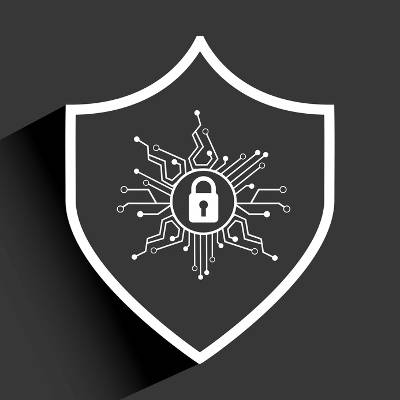NetWorthy Systems Blog
 For argument’s sake, do you think society today relies too much on technology? In the Information Age, both businesses and governments have to be more careful than ever about how they approach cybersecurity. However, what would happen if a massive cyber war were to render any and all computing systems in the United States inert? Granted, such a powerful, in-depth attack is unlikely, but it’s sometimes fun (and frightening) to examine the worst-case scenario.
For argument’s sake, do you think society today relies too much on technology? In the Information Age, both businesses and governments have to be more careful than ever about how they approach cybersecurity. However, what would happen if a massive cyber war were to render any and all computing systems in the United States inert? Granted, such a powerful, in-depth attack is unlikely, but it’s sometimes fun (and frightening) to examine the worst-case scenario.
 If you feel that there’s an increase in ransomware activity, don’t worry; it’s not just you. Hackers are now taking greater advantage of ransomware, a threat that locks down files and returns them in exchange for a payment. This is wreaking havoc on the computing world. Even the FBI has acknowledged the threat, and has issued a warning that the most likely type of cyber extortion users will encounter is probably going to be DDoS attacks.
If you feel that there’s an increase in ransomware activity, don’t worry; it’s not just you. Hackers are now taking greater advantage of ransomware, a threat that locks down files and returns them in exchange for a payment. This is wreaking havoc on the computing world. Even the FBI has acknowledged the threat, and has issued a warning that the most likely type of cyber extortion users will encounter is probably going to be DDoS attacks.
 Ransomware is one of the most devastating computer viruses in today’s computing landscape. You may have heard of one of its most famous variations, Cryptolocker. It received a lot of attention when it dramatically hit the scene two short years ago. Thankfully, the threat from CryptoLocker has decreased after the GameOver Zeus botnet was taken down last year. Although, now we’ve got a new, more contagious strain of this ransomware to deal with known as Cryptowall.
Ransomware is one of the most devastating computer viruses in today’s computing landscape. You may have heard of one of its most famous variations, Cryptolocker. It received a lot of attention when it dramatically hit the scene two short years ago. Thankfully, the threat from CryptoLocker has decreased after the GameOver Zeus botnet was taken down last year. Although, now we’ve got a new, more contagious strain of this ransomware to deal with known as Cryptowall.
 Malware that targets ATMs isn’t a new concept. After all, ATMs use internal computers that can be hacked just the same as any old workstation. The prime difference is that hacking into an ATM allows for a direct dispensing of cash, rather than some crafty behind-the-scenes action. A new type of ATM malware, titled GreenDispenser, is a cause for concern in Mexico, and could spread to other countries if left unchecked.
Malware that targets ATMs isn’t a new concept. After all, ATMs use internal computers that can be hacked just the same as any old workstation. The prime difference is that hacking into an ATM allows for a direct dispensing of cash, rather than some crafty behind-the-scenes action. A new type of ATM malware, titled GreenDispenser, is a cause for concern in Mexico, and could spread to other countries if left unchecked.
 This October is Cybersecurity Month! Some businesses think that they’re immune to hacking attacks because they’re “low profile” compared to huge corporations. However, the truth of the matter is that your organization is just as much at risk as they are. This month, take measures to keep your organization’s data safe, or risk losing everything in the fallout of a hacking attack.
This October is Cybersecurity Month! Some businesses think that they’re immune to hacking attacks because they’re “low profile” compared to huge corporations. However, the truth of the matter is that your organization is just as much at risk as they are. This month, take measures to keep your organization’s data safe, or risk losing everything in the fallout of a hacking attack.
 It’s natural to replace older technologies with better, more recent models. However, the future isn’t looking too bright for the world’s most common website encryption method, SHA1, which will soon be replaced by a more secure protocol. Pretty soon, browsers and devices may have some difficulty reading the latest security certificates, which could cause quite a problem if it’s not remedied.
It’s natural to replace older technologies with better, more recent models. However, the future isn’t looking too bright for the world’s most common website encryption method, SHA1, which will soon be replaced by a more secure protocol. Pretty soon, browsers and devices may have some difficulty reading the latest security certificates, which could cause quite a problem if it’s not remedied.
 A good business practices extreme caution when using the Internet, thanks to hackers using any means possible to unleash threats against organizations of all sizes. You teach your employees how to avoid threats and to avoid suspicious websites, but what if that’s not enough to keep hackers out of your network infrastructure?
A good business practices extreme caution when using the Internet, thanks to hackers using any means possible to unleash threats against organizations of all sizes. You teach your employees how to avoid threats and to avoid suspicious websites, but what if that’s not enough to keep hackers out of your network infrastructure?
 Security is a top priority in today’s business environment, especially following high-profile hacks of notable enterprises. Unfortunately, the fact of the matter is that these hacks could have been prevented if both the employees and employers of these organizations followed strict security best practices for their technology. Thankfully, it doesn’t have to be hard to teach your team how to properly use technology.
Security is a top priority in today’s business environment, especially following high-profile hacks of notable enterprises. Unfortunately, the fact of the matter is that these hacks could have been prevented if both the employees and employers of these organizations followed strict security best practices for their technology. Thankfully, it doesn’t have to be hard to teach your team how to properly use technology.
 When a company is lax about their network security, this can lead to countless threats swarming the network and invading your systems. Yet, sometimes the most dangerous threats come from within. A common issue comes from employees accessing undisclosed files unintentionally and deleting them, which can cause more damage than you think.
When a company is lax about their network security, this can lead to countless threats swarming the network and invading your systems. Yet, sometimes the most dangerous threats come from within. A common issue comes from employees accessing undisclosed files unintentionally and deleting them, which can cause more damage than you think.
 Changing your password is a pain. After you’ve gone several months with the same one, it can be difficult to remember your new password. Despite this, it’s always recommended that you change your passwords often. Unfortunately, when you change all of your passwords often, it’s even easier to forget them. Instead of using a post-it note on your monitor, you should instead try using a password manager.
Changing your password is a pain. After you’ve gone several months with the same one, it can be difficult to remember your new password. Despite this, it’s always recommended that you change your passwords often. Unfortunately, when you change all of your passwords often, it’s even easier to forget them. Instead of using a post-it note on your monitor, you should instead try using a password manager.
 One of the most important factors that you should consider when looking for IT staff is how much you can trust them. After all, they’re dealing with your technology. You’re trusting them with incredible responsibility. Therefore, you need to be sure they are honest, hard-working individuals. How can you ensure that you aren’t getting blindsided by your IT staff?
One of the most important factors that you should consider when looking for IT staff is how much you can trust them. After all, they’re dealing with your technology. You’re trusting them with incredible responsibility. Therefore, you need to be sure they are honest, hard-working individuals. How can you ensure that you aren’t getting blindsided by your IT staff?
 You’re walking your dog when all of a sudden, you get this game-changing idea for how to manage your technology. You get excited to integrate it into your IT strategy, but by the time you get home, the thought is gone and you can’t remember it. This “Eureka” moment is just like data loss; it could occur at any time, and without warning, whether you’re ready for it or not.
You’re walking your dog when all of a sudden, you get this game-changing idea for how to manage your technology. You get excited to integrate it into your IT strategy, but by the time you get home, the thought is gone and you can’t remember it. This “Eureka” moment is just like data loss; it could occur at any time, and without warning, whether you’re ready for it or not.
 Humans are always trying to improve security protocols that can protect against increasingly advanced online threats. Unfortunately, the threats only grow stronger in response, and the war against malicious online activity rages on. Biometrics are security measures that are growing in popularity, but are expensive and difficult to integrate. Now, the US military is funding a campaign to make it more readily available to end users.
Humans are always trying to improve security protocols that can protect against increasingly advanced online threats. Unfortunately, the threats only grow stronger in response, and the war against malicious online activity rages on. Biometrics are security measures that are growing in popularity, but are expensive and difficult to integrate. Now, the US military is funding a campaign to make it more readily available to end users.
 There are several factors at work when scoping out your current network security situation. According to a study from 1&1, 67 percent of people confirmed that someone they know has had information stolen from them while online, which means that your business could be next. In order to remain one of the few unaffected by security breaches, consider these three network security features for your business.
There are several factors at work when scoping out your current network security situation. According to a study from 1&1, 67 percent of people confirmed that someone they know has had information stolen from them while online, which means that your business could be next. In order to remain one of the few unaffected by security breaches, consider these three network security features for your business.
 People dial 911 when they’re in some sort of trouble or in the event of an emergency. If not for the hotline, who knows how many lives could be lost daily. Sometimes, however, help doesn’t come, even when dispatchers have received the call and responded. This generally isn’t the fault of the dispatchers, but rather the criminals who have undermined the rescue efforts thanks to some unorthodox hacking.
People dial 911 when they’re in some sort of trouble or in the event of an emergency. If not for the hotline, who knows how many lives could be lost daily. Sometimes, however, help doesn’t come, even when dispatchers have received the call and responded. This generally isn’t the fault of the dispatchers, but rather the criminals who have undermined the rescue efforts thanks to some unorthodox hacking.
 The Internet is up to its ears with threats and hackers, but some of the most annoying malicious entities are bots. These are systems which can gather information from all kinds of sources. While some aren’t malicious in nature (think SEO bots which gather data from websites), there are those that aren’t so innocent. These tend to fall into the hands of hackers and attempt to steal information or send spam.
The Internet is up to its ears with threats and hackers, but some of the most annoying malicious entities are bots. These are systems which can gather information from all kinds of sources. While some aren’t malicious in nature (think SEO bots which gather data from websites), there are those that aren’t so innocent. These tend to fall into the hands of hackers and attempt to steal information or send spam.
 This holiday season might leave technology and entertainment supergiant Sony with nothing but a big lump of coal in its stocking. In a high-profile hack, hackers continue to leak Sony’s employees’ sensitive information like Social Security numbers, passports, and even personal emails. This is obviously an issue for the company, but so is its lack of IT security, as shown by their passwords being stored in a folder named “Passwords.”
This holiday season might leave technology and entertainment supergiant Sony with nothing but a big lump of coal in its stocking. In a high-profile hack, hackers continue to leak Sony’s employees’ sensitive information like Social Security numbers, passports, and even personal emails. This is obviously an issue for the company, but so is its lack of IT security, as shown by their passwords being stored in a folder named “Passwords.”



